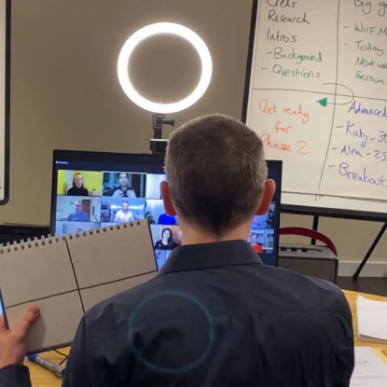“A purposeful story provides insight and moves you to take action”
Storytelling, The Pathway To Success
Why do most presentations and pitches fail to engage us? The person is saying what they want to say. If you want to compel people to listen you need to say what people NEED to hear in the ORDER they need to hear it.
Stories do exactly this. They give us the information we need in the most captivating structure. If you can do this in business you will win the hearts and minds of your audience.
In the simplest way, stories root themselves more firmly and deeply in our minds than other forms of messaging. In business, we can harness the power of storytelling to move customers to take action. There is extensive research supporting the impact of storytelling in business, according to the legendary expert, Robert McKee.
I was fortunate enough to chat with McKee on the Body Talk podcast. McKee’s students have gone on to incredible careers and accomplishments, including a collective 60 Academy Awards and 200 Emmys.
He is also the author of the recent, successful Storynomics — a book (which I devoured in the space of a few days) that “illuminates what story is, why the story works, and most importantly, how storytelling in business translates into economic and leadership success.” And his seminar of the same name is so insightful and interesting that my entire team and I have attended it twice.
Here’s why “the art of story” plays a monumental role in business:
A purposeful story provides insight and moves you to take action.
In fiction storytelling, there is no greater purpose beyond the story itself. The audience experiences fiction enjoys it, savors it. But as a fictional storyteller, your aim is not to persuade your audience to take action in any particular form.
McKee calls this type of storytelling “purpose-driven” or “mirror storytelling.” The latter term is appropriate because, when executed well, business storytelling resonates with the audience on a personal, subconscious level — it unfolds within them as they experience it externally.
Your audience’s internal narrative sounds something like: “This story is about me, my needs, my problems, what I want, what I need to do.”
When accomplished, your audience will walk away from your story motivated and inspired to take action — to go out into the world and do what the story told them to. And in the context of your particular business, this could be anything from purchasing a product to shifting attitudes toward your brand in a positive light.
The point McKee hammers home most fervently in his lectures: There is a clear distinction between narrative and storytelling.
Talking about your CEO’s career and accomplishments are what’s known as “the narrative,” not storytelling, said McKee. The narrative is chronological, descriptive, and process-driven — “I started this company. We designed the best product. You should buy it. That’s all you need to know.” But in storytelling, you need a compelling journey — this means you must acknowledge negatives as well as positives.
McKee recognizes this as a major issue within the business world, proliferated by a universal fear of the negative. He calls this “negaphobia.”
“Story has to hit a negative floor to reach a positive climax,” he explained. “Because if it’s positive, positive, positive, the positive has no impact.”
The average company doesn’t understand the difference between narrative and story. As a result, business people come to him in droves asking him why no one is listening to their “story.” Nine times out of 10, they’re not even telling a story — it’s just narrative.
In the business world, stories pioneer and solve problems.
Very few people in today’s business landscape understand the value of storytelling better than Jeff Bezos. In fact, Bezos harnessed the power of storytelling years ago — long before it became mainstream. But he didn’t just use storytelling to influence customers.
He leveraged the power of storytelling to innovate and solve problems internally.
For upcoming meetings, Bezos would ask his team to come prepared with a story about a particular problem or situation. He knew this would force them to consider all angles, to dig deeper for answers. This inspired his team to think beyond “what isn’t working?” and question “why isn’t it working?”
Weaving a story requires someone to dive beyond the surface, to connect the dots, and, ultimately, to obtain real knowledge and understanding of a situation or problem. While competitors were poring over data and conducting substanceless, rhetoric-driven meetings, Amazon was solving human problems.
This is why every business should have storytellers — people who are passionate about purpose-driven storytelling. Because through stories, any business or brand can connect with and influence its audience on a deeper level.
To learn more about how we can help you please contact our team.



















